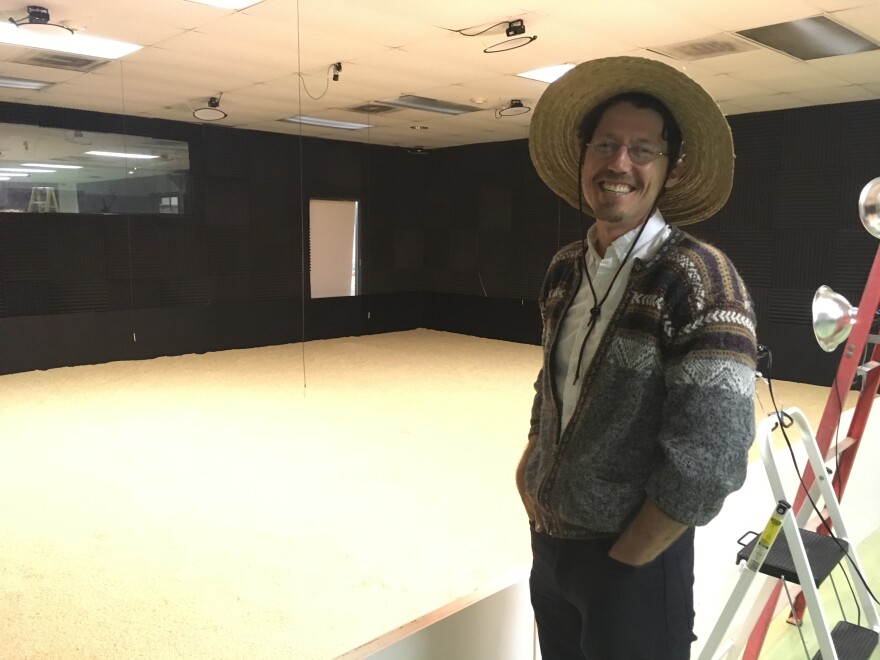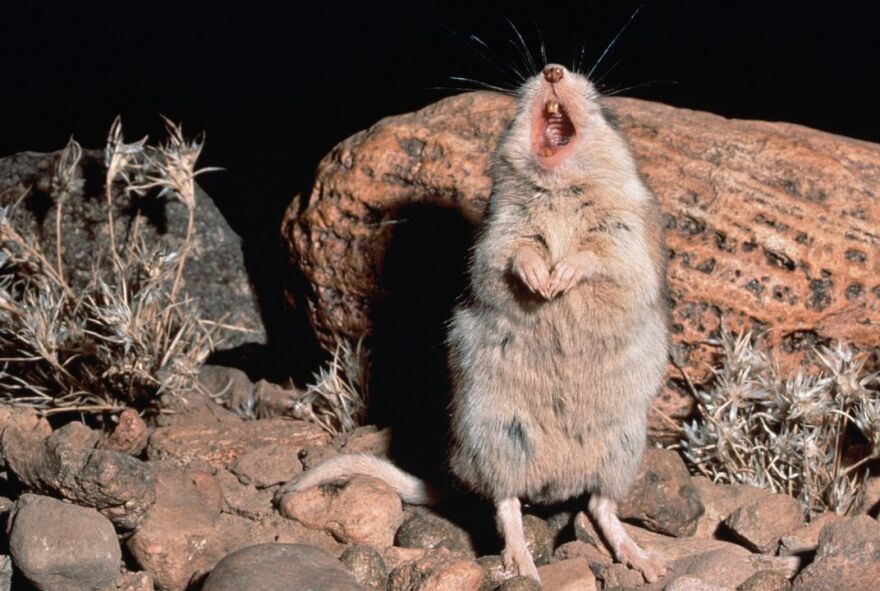Researchers are learning more about human voices by studying grasshopper mice. Their call, barely audible to human ears, is produced the same way that humans speak. Northern Arizona University Biologist Bret Pasch says the rodents stand upright, tilt their heads back and flare their mouths, like an opera singer.
“The long distance calls that they make are quite loud, much louder than what most typical mice and rats make, which are ultrasonic vocalizations only made when animals are in very close distance, like within a body length, and we often can’t hear those because they’re ultrasonic, above human hearing,” says Pasch.
To study grasshopper mice, Pasch has created an indoor, soundproof desert arena.
“It’s probably a 20 foot by 40-foot room that we’ve lined with bedding and … acoustic foam so that there’s no echoes. And on each side of the arena we have speakers where we can play back sound to the animals and then we have a 20-microphone array that’s sitting above so that we can record animals and their sounds wherever they are in this arena,” Pasch says.

Because grasshopper mice produce sound in the same way humans do, Pasch says they have a lot to teach us about our own voices, injury, repair, and aging vocal cords. And his research may lead to insights about healing the human voice.









